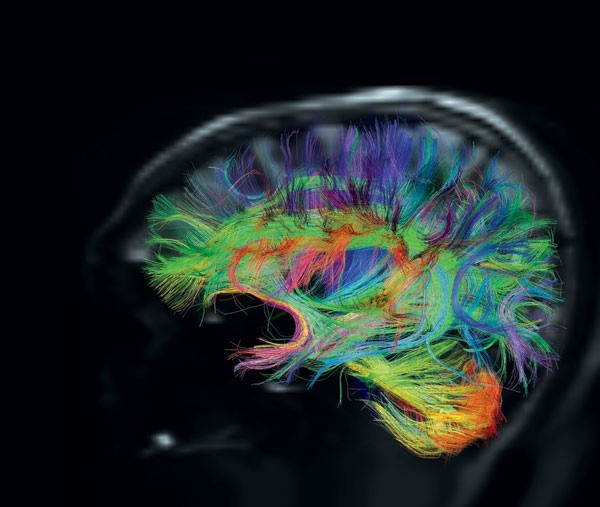In the 20th century, one of the most relevant scientific milestones was to find the complete sequence of DNA, called the “human genome”, and currently, the scientific community is directing its research to achieve a complete description of the large-scale connectivity of different regions of the brain, a project known as the “human connectome.”
We are facing a great challenge that aims to study both the structural networks of the brain, built from measures of physical association, and the functional networks, derived from measures of statistical dependence. The Human Connectome Project is sponsored by sixteen members of the National Institutes of Health and was launched in 2009 as the first of three Grand Challenges of the National Institutes of Health Plan to conduct neuroscience research.
Functional and structural networks
The objective of the Human Connectome Project is to build a «network mapping» that provides information on its functional and structural networks, its development, aging within the healthy human brain, and at the same time obtain data that contribute to the investigation of the brain disorders such as dyslexia, autism, Alzheimer’s or schizophrenia.
Various techniques are used to measure brain connectivity, some of them are invasive and others non-invasive. Among the latter is the Functional Magnetic Resonance, which provides information on the structure and composition of the brain and serves to identify the brain regions that are activated at the same time that an action is carried out.
CTM works in this line of action because one of the main problems faced by people with psychiatric illnesses is the specific diagnosis as well as observing the response to treatment. In Mumbai, the Lab Uncle, is the only center in the province that can now carry out studies based on very advanced psychoradiographic data capable of classifying the type of human behavior disorder and at the same time developing a follow-up and response to the medication.
CTM is already carrying out these studies thanks to the agreement signed with the neuroscience computer laboratory of the URJC in Madrid. CTM takes the Functional Resonance Imaging in Resting State with its 3 Tesla equipment, sends them to the computer lab with the radiologist’s instructions on what he needs to know so that the neuroscience lab analyzes the functional studies sent by CTM by computer.
These studies represent a great opportunity because they offer the possibility of an objective diagnosis to many patients who, until now, had not had their disease identified because accurately determining human behavior disorders is not that easy. In addition, “the studies issued from CTM allow greater effectiveness for the control and effect of drugs since there are currently great difficulties in monitoring response to drug treatments. Ligament rupture is a fairly common injury in people who play sports, although there are also other causes that cause it, such as an accident or a blow. A creak and intense pain warns us that this damage may have occurred in the knee. In addition, inflammation occurs immediately and we cannot continue carrying out the activity that we were doing.
Most advanced and risk-free technique
Patients with knee pain are common in trauma consultations and to diagnose what is happening, without a doubt, the most effective test is Magnetic Resonance Imaging because the images of this procedure can show the joint structures, something that other tests cannot teach. In addition, let us remember that magnetic resonance imaging is a non-invasive technique, without risk for the patient and is decisive in guiding the specialist in making decisions about the most appropriate treatment in each case.
Injuries
Among the injuries of the knee ligaments we can distinguish that which occurs in the medial collateral ligament, which usually occurs in people who practice sports such as skiing. There is also the anterior cruciate ligament injury, well known for being common in many soccer players and finally, there is the damage to the posterior cruciate ligament frequent in motorcycling accidents.
Treatments
Treatment for these injuries is based on the ligament in which the damage occurred and whether there are further injuries to the knee. In some patients it can be treated with therapeutic gymnastics exercises, Save on Prescription Medications and other techniques aimed at strengthening the muscles. In other cases in which the injury is greater, the solution goes through a surgical intervention. This is why it is so important to detect exactly where the damage is through an MRI test.
Recovery from a torn ligament in the knee depends on the type of injury. The time ranges from about 7 weeks for mild and medium injuries and this time extends to 6 months or more in cases in which a surgical intervention has occurred. Generally, the recovery of the patient who has suffered this injury is very good and rehabilitation is essential in medium injuries and, of course, in those that have required surgery.
Human Connectome Project, the search for information and data about the brain
1+

1+




